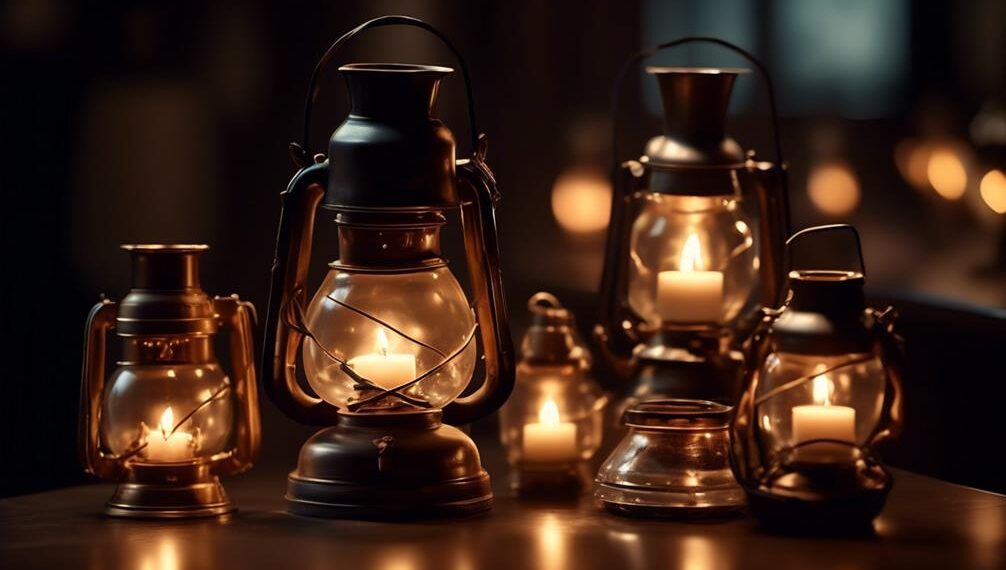Prepare to be dazzled as you embark on a captivating journey through the fascinating world of lighting design trends.
From the prehistoric era to modern times, you will discover how lighting has evolved and shaped the way we perceive and interact with our surroundings.
From ancient Egyptian innovations to the birth of decorative lighting in the Renaissance era, each era has left its indelible mark on the way we illuminate our lives.
But the story doesn't end there. There are still countless secrets to uncover, as we explore the impact of the industrial revolution, the rise of electric lighting, and the influence of modernism and minimalism.
So, fasten your seatbelt and get ready to witness the illuminating wonders of history unfold.
Key Takeaways
- Fire has been used for light and heat since prehistoric times.
- The ancient Egyptians developed candlelight techniques and invented oil lamps.
- Candles were highly valued in medieval times for illumination and symbolism.
- The Industrial Revolution brought about the rapid rise of electric lighting, revolutionizing illumination in industries.
Prehistoric Influence on Lighting Design
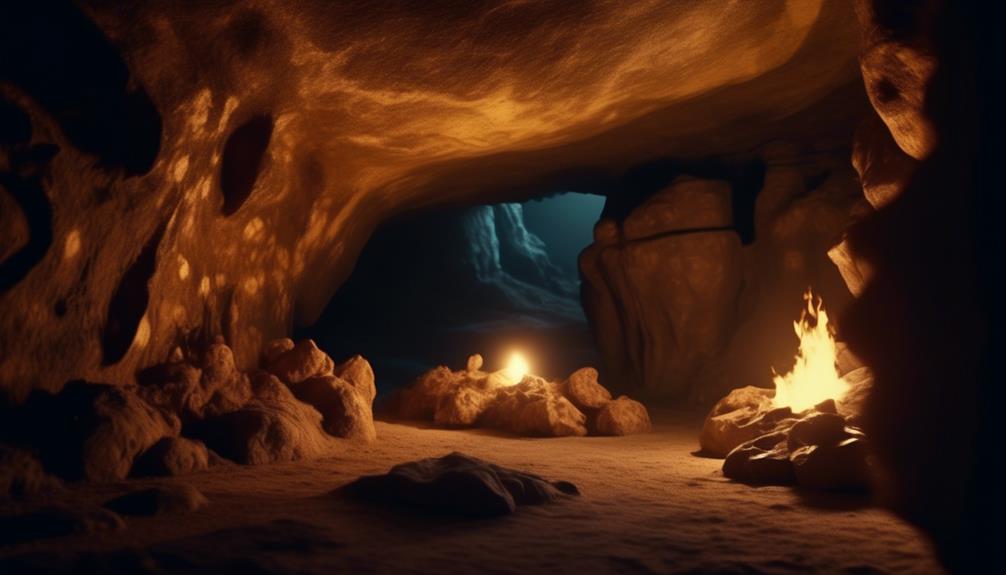
Have you ever wondered how prehistoric cultures influenced the way we design and use lighting today? The use of fire by prehistoric humans was a pivotal development in the history of lighting. Prehistoric fire served as both a source of light and a means of heat, allowing early humans to extend their days and protect themselves from predators. This natural light source was essential for survival, and it profoundly shaped the way early humans interacted with their environment.
As prehistoric humans progressed, they began to harness fire in a more controlled manner. They discovered that fire could be used for cooking, providing warmth, and creating a safe environment. This knowledge allowed them to gather around the fire and engage in social activities, fostering a sense of community and connection. The use of fire also influenced the design of prehistoric dwellings, as central hearths were often incorporated into living spaces.
The reliance on natural light sources continued well into ancient civilizations, where advancements in architecture and design led to the creation of structures that maximized the use of daylight. The ancient Egyptians, for example, built their temples and tombs with strategically placed openings that allowed natural light to illuminate sacred spaces. This emphasis on natural light not only served practical purposes but also held symbolic meaning, representing enlightenment and spirituality.
Ancient Egyptian Innovations in Lighting
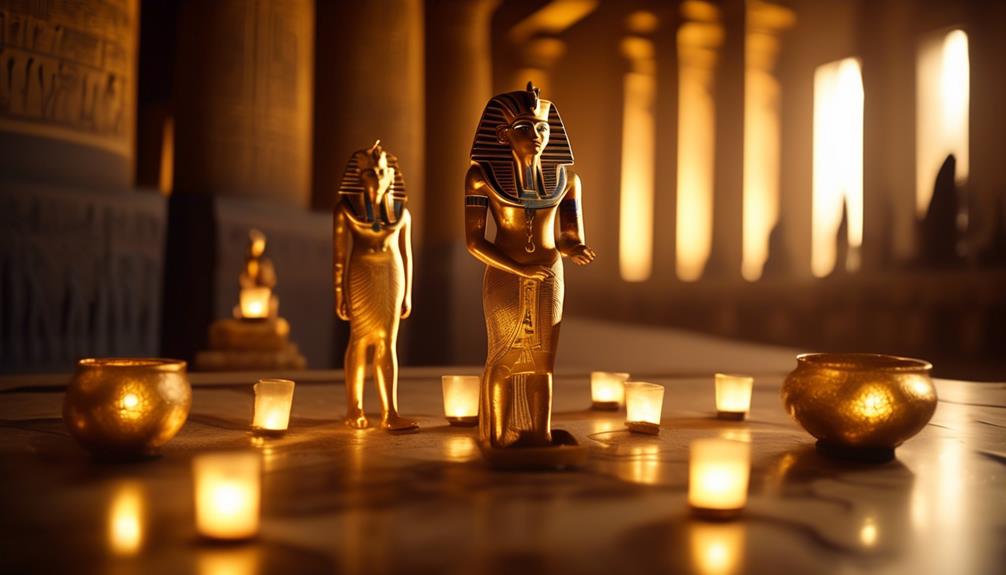
You may be surprised to learn that ancient Egyptians were pioneers in the field of lighting. They developed sophisticated candlelight techniques, using wicks made from papyrus and beeswax, which provided a steady and reliable source of light.
They also invented oil lamps, which utilized animal fat or vegetable oil as fuel, and were much more efficient than candles.
Additionally, the Egyptians were known for their elaborate lighting systems in temples, using mirrors and reflective surfaces to amplify and distribute light throughout the sacred spaces.
Egyptian Candlelight Techniques
Ancient Egyptians revolutionized lighting with their innovative candlelight techniques, illuminating their surroundings with a mesmerizing glow that captivated both their civilization and future generations.
Egyptian candlelight techniques were far ahead of their time, showcasing the Egyptians' deep understanding of light and its transformative power. They ingeniously used animal fats to create candles, which provided a steady and reliable source of light. These candles were made by soaking papyrus reeds in melted animal fats, forming a wick that burned slowly and emitted a warm, flickering light.
The Egyptians also developed intricate candle holders, such as lotus-shaped designs, that not only held the candles securely but also enhanced the surrounding ambiance.
Today, modern candlelight trends have drawn inspiration from these ancient techniques, with candlelight being used to create a warm and inviting atmosphere in various settings, from homes to restaurants and even outdoor events.
The Egyptians' mastery of candlelight techniques continues to influence and inspire lighting design to this day.
Oil Lamp Inventions
The remarkable innovations in lighting during ancient Egypt include the invention of oil lamps, which played a pivotal role in illuminating their civilization. The designs of these oil lamps weren't only functional but also aesthetically pleasing. They were made from various materials such as clay, bronze, and alabaster, showcasing the Egyptians' craftsmanship and attention to detail.
The historical significance of these oil lamp designs can be seen in their widespread use, from temples and palaces to the common households. The invention of oil lamps revolutionized the way Egyptians lived, providing a reliable and efficient source of light during the night. It allowed for extended working hours, improved safety, and enhanced the overall quality of life.
The oil lamp designs are a testament to the ingenuity and advanced technological understanding of the ancient Egyptians.
Ancient Temple Illumination
With their advanced understanding of technology and craftsmanship, ancient Egyptians ingeniously illuminated their temples through innovative lighting designs. The temples served as a sacred space for temple rituals, and lighting played a crucial role in enhancing the religious symbolism.
The Egyptians used various lighting techniques to create a mystical atmosphere within the temples. They employed natural light by strategically placing windows and openings, allowing sunlight to filter in and cast ethereal patterns on the temple walls.
They also utilized oil lamps, which were adorned with religious symbols and placed strategically throughout the temple to create a warm and inviting ambiance. Additionally, they incorporated reflective surfaces such as polished metal and mirrors to amplify the light and create an illusion of divine radiance.
Through these ingenious lighting designs, the ancient Egyptians successfully created an immersive and spiritually uplifting experience for worshippers, connecting them with the divine.
Medieval Lighting Techniques and Innovations
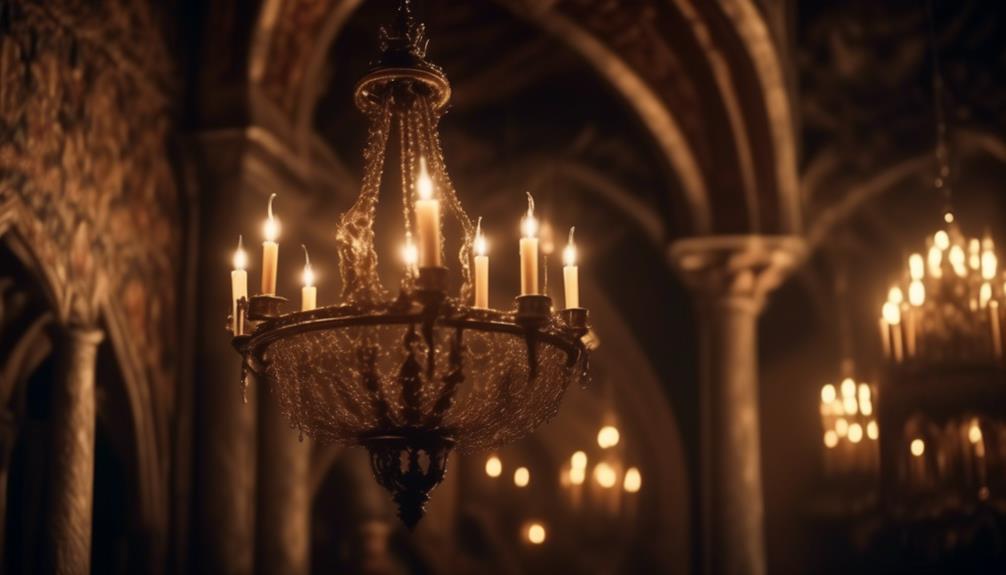
As you explore the world of medieval lighting techniques and innovations, you'll come to appreciate the vital role candlelight played during this time period. Not only did candles provide much-needed illumination, but they also created a warm and inviting ambiance.
Additionally, advancements in chandeliers during the medieval era allowed for more elaborate and grand lighting fixtures, showcasing the wealth and status of the nobility.
Candlelight's Role
Medieval lighting techniques and innovations revolutionized the use of candlelight, transforming it from a mere source of illumination to a symbol of social status and religious devotion. Candlelight's symbolism became deeply ingrained in society, reflecting the power and wealth of the elite.
The flickering glow of candles created an atmosphere of intimacy and mystery, enhancing the beauty of architectural spaces. It served as a visual representation of religious devotion, with candlelit processions and ceremonies becoming an integral part of worship.
However, the advent of electricity in the late 19th century marked a turning point for candlelight. As electric lighting became more accessible, candles lost their practicality and their symbolic value diminished.
Yet, even today, candlelight continues to evoke a sense of nostalgia and authenticity, providing a warm and inviting ambiance that can't be replicated by artificial light sources.
Advancements in Chandeliers
Advancements in chandeliers during the medieval era revolutionized lighting techniques and innovations, transforming the way spaces were illuminated and elevating the use of candlelight to new heights. These advancements in chandeliers allowed for the creation of more elaborate and ornate designs, making them a symbol of wealth and status. The innovations in chandeliers included the use of multiple tiers, intricate metalwork, and the incorporation of crystals and glass. These features not only enhanced the aesthetic appeal of the chandeliers but also increased their functionality by dispersing light more effectively. The advancements in chandeliers also led to the development of adjustable chains and pulleys, allowing for easy installation and maintenance. Overall, these innovations in chandeliers during the medieval era greatly improved the quality and versatility of lighting design, leaving a lasting impact on future generations.
| Advancements | Innovations | Impact |
|---|---|---|
| Use of multiple tiers | Elaborate metalwork | Enhanced aesthetics |
| Incorporation of crystals and glass | Adjustable chains and pulleys | Improved functionality |
| More elaborate and ornate designs | Symbol of wealth and status |
Renaissance Era: The Birth of Decorative Lighting
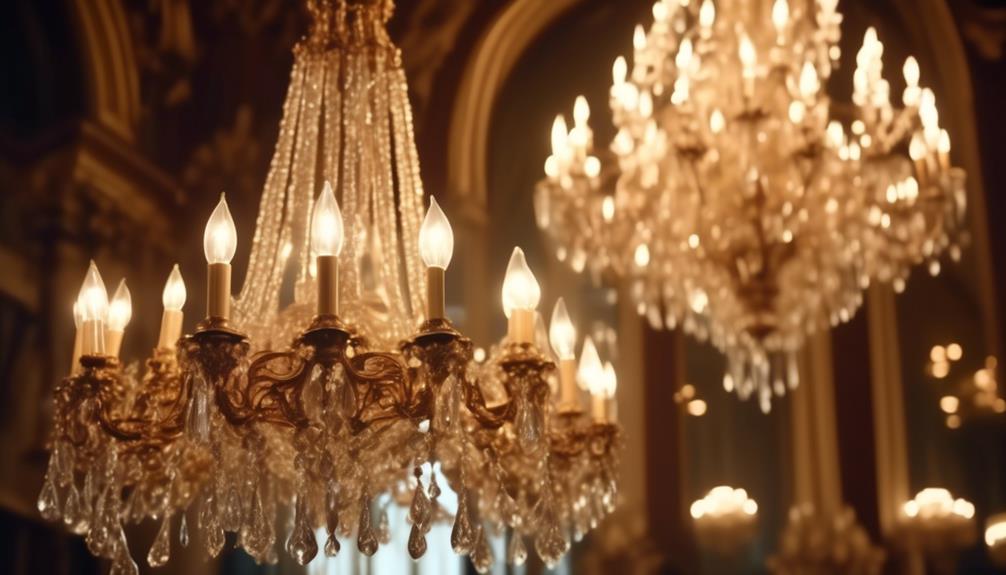
During the Renaissance Era, the world witnessed a transformative shift in lighting design, as decorative lighting emerged as a prominent element in architectural and interior spaces. This era marked a departure from the purely functional lighting techniques of previous centuries, as artists and designers began to explore new ways to enhance the aesthetic appeal of their spaces.
The Renaissance lighting styles were characterized by their intricate and ornate designs, which often featured elaborate chandeliers and sconces adorned with crystals, glass, and metalwork. These decorative lighting fixtures weren't only functional but also served as a symbol of wealth and status.
To understand the significance of this shift, it's important to delve deeper into the two sub-lists:
- Technological advancements:
- The development of new materials and techniques allowed for the creation of more intricate and detailed lighting fixtures.
- Innovations in glassmaking and metalworking techniques, such as the use of Venetian glass and gilding, added a luxurious touch to the lighting designs.
- Artistic influences:
- The Renaissance period was marked by a renewed interest in classical art and architecture, which heavily influenced the design of decorative lighting.
- Artists and architects drew inspiration from ancient Roman and Greek designs, incorporating elements such as volutes, acanthus leaves, and classical motifs into their lighting fixtures.
Industrial Revolution and the Rise of Electric Lighting
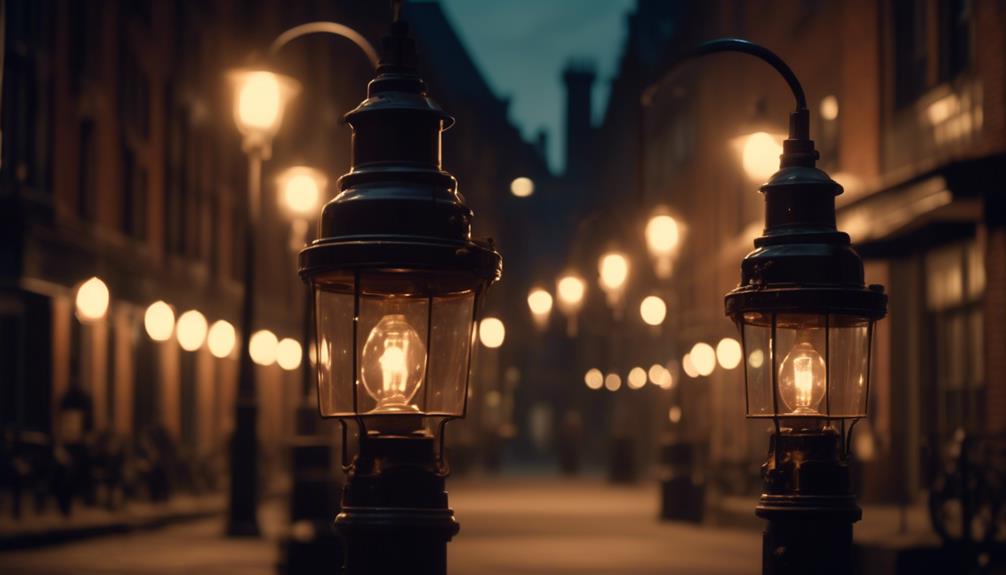
The Industrial Revolution brought about a transformative era in lighting design, marked by the rapid rise of electric lighting as a revolutionary technological advancement. The impact of the industrial revolution on lighting design was profound, leading to a significant evolution in the way lighting was implemented and used.
As factories and industries flourished, there was a growing need for efficient and reliable lighting solutions to illuminate these vast spaces. The introduction of electric lighting during this era revolutionized the way spaces were illuminated, offering a more practical and sustainable alternative to traditional lighting methods.
Electric lighting provided a more consistent and controllable light source, enabling designers to experiment with new concepts and designs. The ability to adjust the intensity and color of the light opened up new possibilities for creating dynamic and immersive environments. Industrial spaces were no longer confined to the limitations of natural light or inefficient gas lamps. With the advent of electric lighting, factories and warehouses could operate around the clock, increasing productivity and efficiency.
The industrial revolution's impact on lighting design extended beyond just industrial spaces. As electric lighting became more accessible, it found its way into homes, offices, and public spaces. The introduction of the incandescent light bulb by Thomas Edison in the late 19th century further propelled the popularity and widespread adoption of electric lighting.
The rise of electric lighting during the industrial revolution marked a turning point in lighting design, setting the stage for further advancements in the field. It laid the foundation for the development of new lighting technologies and techniques that continue to shape the way we illuminate our spaces today. The industrial revolution's impact on lighting design wasn't just a technological revolution, but a catalyst for freedom and progress in the way we perceive and interact with light.
Modernism and Minimalism in Lighting Design
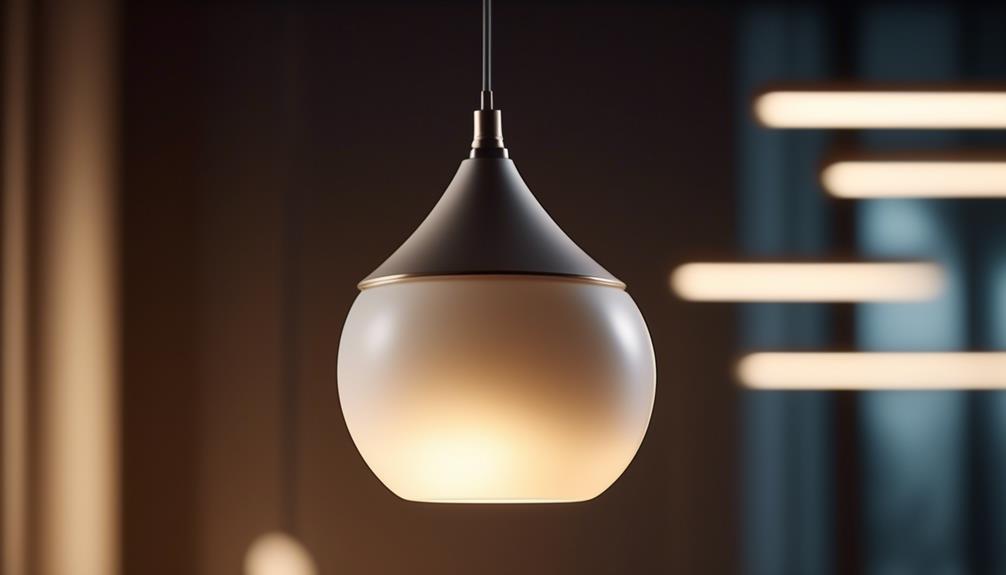
Modernism and minimalism have had a significant impact on lighting design, influencing the way spaces are illuminated and creating a sense of simplicity and efficiency. The integration of modern lighting fixtures and minimalist lighting aesthetics has revolutionized the way we perceive and interact with light in our surroundings.
Here are two key aspects to consider:
- Streamlined designs: Modern lighting fixtures embrace clean lines, geometric shapes, and sleek materials, reflecting the minimalist ideology of 'less is more.' These fixtures are characterized by their simplicity and functionality, often featuring straight angles and simple forms that eliminate unnecessary embellishments. This design approach ensures that the focus remains on the quality and effect of the light itself, rather than on ornamental details.
- Efficient use of light: Minimalist lighting aesthetics prioritize the efficient use of light, aiming to eliminate any wasted energy or unnecessary illumination. This is achieved through the use of technologies such as LED lighting, which provides precise control over light output and consumes less energy compared to traditional lighting sources. Additionally, minimalist lighting design takes into account the natural lighting available in a space, strategically integrating it with artificial lighting to create a harmonious and balanced environment.
How Have Historical Epochs Influenced Contemporary Lighting Design Trends?
Throughout history, epochs in lighting design have shaped contemporary trends. From the ornate chandeliers of the Baroque period to the industrial influence of the Victorian era, historical styles continue to inspire modern lighting aesthetics. Understanding the evolution of lighting design is essential for creating impactful and timeless interior spaces.
Frequently Asked Questions
How Did Prehistoric Humans Create Light Without the Use of Fire or Electricity?
You might be surprised to learn that prehistoric humans actually had some pretty nifty ways of creating light without fire or electricity. From simple techniques like using animal fat to more elaborate methods like the Ancient Egyptians' use of oil lamps, our ancestors were quite resourceful.
What Were the Religious and Cultural Significance of Lighting in Ancient Egypt?
In ancient Egypt, lighting held great religious and cultural significance. It was used in religious practices, symbolizing enlightenment and divine presence. The use of light in ceremonies and temples created a sacred atmosphere, connecting people to their gods.
How Did Medieval Lighting Techniques Differ From Those Used in Prehistoric and Ancient Egyptian Times?
Medieval lighting techniques differed from prehistoric and ancient Egyptian times due to advancements in lighting during the Middle Ages. New technologies like oil lamps and candles were introduced, allowing for more controlled and versatile lighting options.
What Were the Main Materials Used for Decorative Lighting During the Renaissance Era?
During the Renaissance era, the main materials used for decorative lighting were candles and oil lamps. These were often crafted with intricate designs and placed in chandeliers or wall sconces to illuminate grand halls and homes.
How Did the Industrial Revolution Impact the Availability and Affordability of Electric Lighting for the General Population?
The industrial revolution revolutionized the availability and affordability of electric lighting for the general population. As factories and production increased, so did the production of electric lights, making them more accessible and affordable for everyone.

